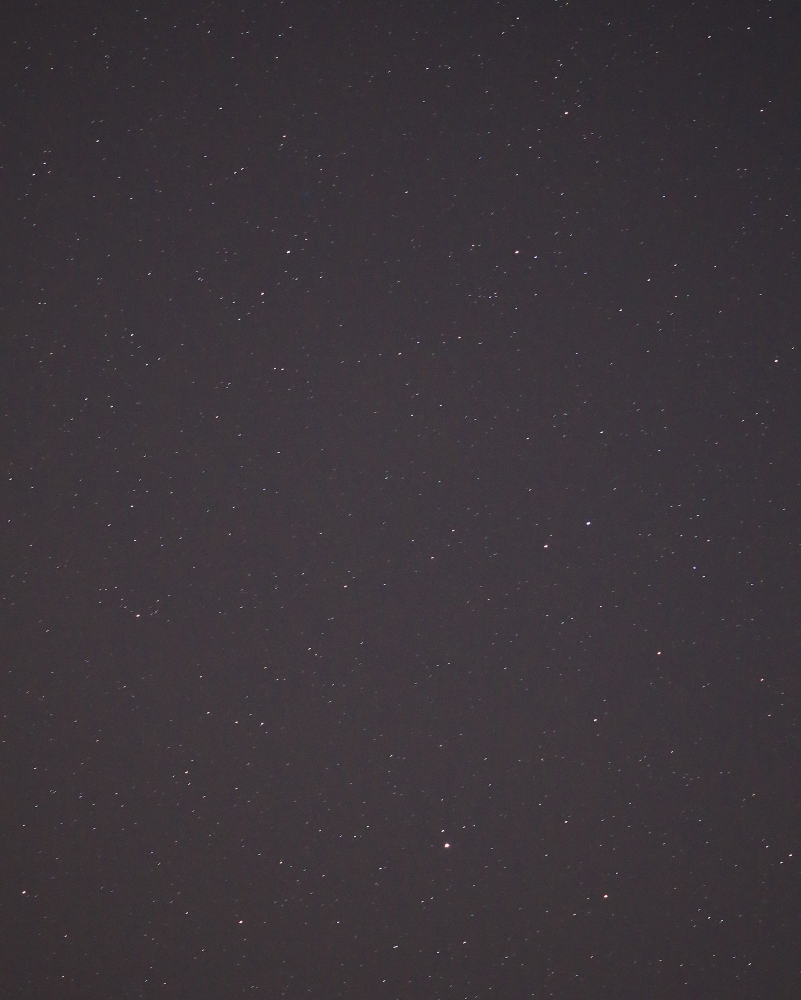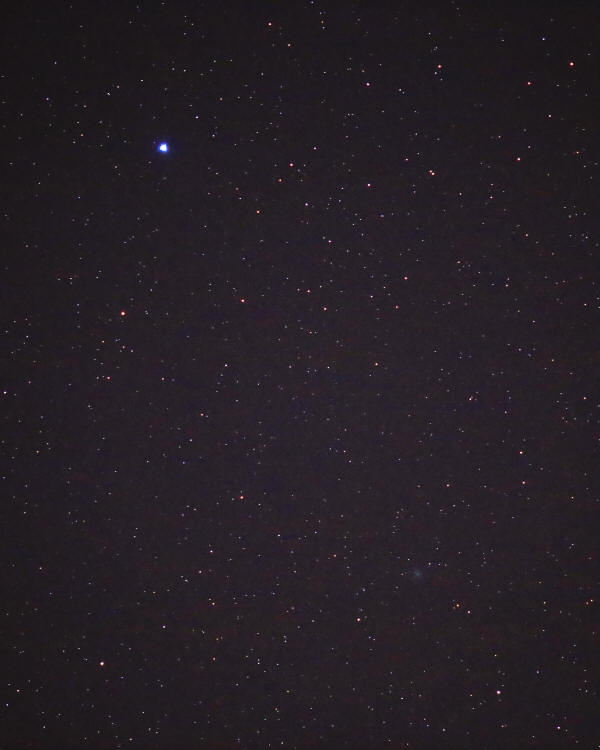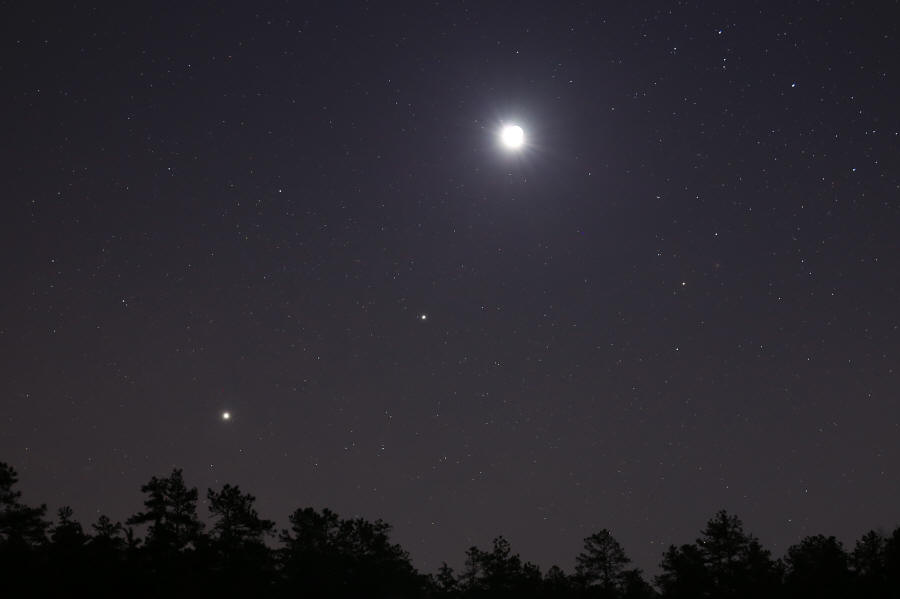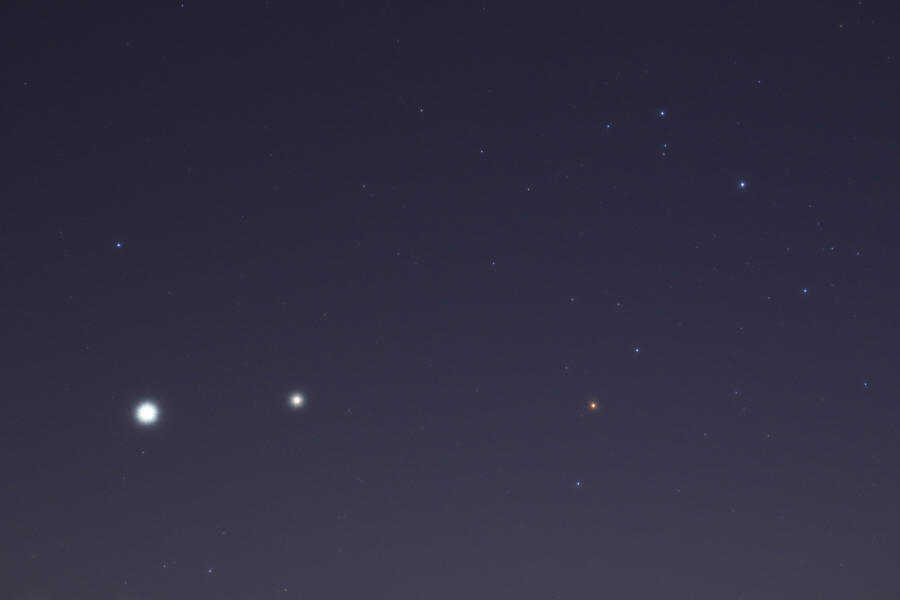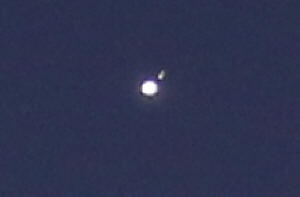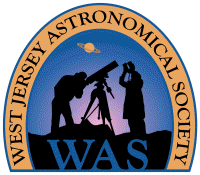SJAstro Page Index
Mercury
The planet
Mercury was spotted for the first time
this year on February 16, 2019,
at 6:15 pm EST from the Maple Shade, NJ, baseball field complex with
15x56 binoculars, and then immediately with unaided eyes. At the time,
Mercury was at 5.0° altitude and fairly bright at magnitude -1.1, coming
off of superior conjunction on January 29. This image was captured at
6:24 pm, 47 minutes after sunset at 5:37 pm, when Mercury was at 3.4° altitude.
Taken with a Canon 7D Mk II
digital SLR camera and a Tamron 150 to 600 mm f/5-6.3 zoom lens set to
400 mm focal length, then cropped slightly (to remove an aircraft)
yielding a field 3.1° wide x 2.1° high. It was exposed 1/3 second at
f/5.6, ISO 800 and daylight white balance. The star 0.4° above-right of
Mercury is magnitude 3.8 Lambda Aquarii (Hydor). Mouseover for
labels.
Comet C/2018 Y1 (Iwamoto)
Comet
C/2018 Y1 (Iwamoto)
in Leo on February 10, 2019,
from Carranza Field in Wharton State Forest, NJ. Taken at
12:40 am EST with a Canon 7D Mk II digital SLR camera
and a Canon 200 mm f/2.8L lens on a fixed tripod. It was exposed 4
seconds at f/2.8, ISO 6400, 4400 K white balance. Besides size reduction, no processing
was applied. Unfortunately, I didn't have the focus quite right during
the session. The field is 6.4° wide x 4.3° high, centered on magnitude
4.6 Chi Leonis. Mouseover for
labels. The comet was obvious in 15x56 binoculars, but not seen with
unaided eyes, and its motion was detected in as little as 10 minutes
with the binoculars; see my Iwamoto page
for details.
East Point, New Jersey
The great globular cluster,
Omega Centauri (NGC 5139), was observed on
February 3, 2019,
from
East Point, NJ. Taken at 4:48 am EST with a Canon 6D digital SLR camera (on a fixed tripod)
and a Sigma 50 mm f/1.4 Art lens. It was exposed 4
seconds at f/2.0, ISO 4000, 3800 K white balance. It was cropped to 61%
of the original linear dimensions yielding a field 25° wide x 17° high. Mouseover for
labels.
The camera's GPS recorded this
location as 39°11'39" north, 75°01'35" west. Omega is almost obvious in
this image looking south over the Delaware Bay and was easily seen in
15x56 binoculars, despite low-level haze/fog; however, it was not seen with
unaided eyes. The dark bulge above the horizon left of center is the gap
between Cape May, NJ, on the left and Lewes, DE, on the right. It looks
slightly east of due south toward the Atlantic Ocean, about 25 miles away.
In this picture, Zeta Centauri is at 177° azimuth and Omega Centauri
is at 182° azimuth.
Here are the bright planets
Venus, in the constellation Sagittarius, and
Jupiter in the constellation
Ophiuchus. This picture was captured at 4:43 am EST on
February 3, 2019,
from East Point, NJ.
At the time, Venus and Jupiter were
11.4° apart, while Venus was at 4.2° altitude and Jupiter was at
10.6° altitude.
To the right of the planets is the upper part of Scorpius,
with its first-magnitude star Antares and nearby globular cluster, M4. Mouseover
for labels. Saturn was spotted low in the southeast with 15x56
binoculars at 5:45 am. It was just 2.8° altitude, so its appearance
suffered from atmospherics, but it certainly looked elongated from the
unresolved rings.
Taken with a
Canon 6D digital SLR camera (on a fixed tripod) and a Sigma 50 mm
f/1.4 Art lens. It was exposed 4 seconds at f/2.0, ISO 4000, 3800 K
white balance. The uncropped
field is about 39° wide x 27° high.
This relatively wide-angle view shows the star field around comet
C/2018 Y1 (Iwamoto)
in Virgo on February 3, 2019.
It looks south over the Delaware Bay from East Point, NJ. Taken at
4:42 am EST with a Canon 6D digital SLR camera
(on a fixed tripod) and a Sigma 50 mm f/1.4 Art lens. It was exposed 4
seconds at f/2.0, ISO 4000, 4000 K white balance. It was cropped to 80% of the original
linear dimensions for a field about 32° wide x 23° high. Mouseover for
labels. There's a closer crop of the comet area on my
Iwamoto page.
C/2018 Y1 (Iwamoto) was also observed
visually on February 3 with 15x56 binoculars and an 85 mm spotting
scope. Iwamoto was in the same 4.5° binocular field of view as M104, the Sombrero Galaxy.
Comet C/2018 Y1 (Iwamoto)
Comet
C/2018 Y1 (Iwamoto)
in Virgo on January 30, 2019,
from Carranza Field in Wharton State Forest, NJ. Taken at
4:54 am EST with a Canon 6D digital SLR camera
and a Canon 200 mm f/2.8L lens on a fixed tripod. It was exposed 2
seconds at f/2.8, ISO 12,800, 4400 K white balance. It was cropped to a
vertical 8x10 ratio (53% of the original area) and the
brightness/contrast were mildly adjusted. The field is 5.5° wide x 6.8° high. Mouseover for
labels. There's a closer crop of the comet area on my
Iwamoto page.
C/2018 Y1 (Iwamoto) was initially observed
on January 12, 2019, from Carranza Field with an 85 mm spotting scope
and best seen with its maximum magnification of 60x, although it was
only at the threshold of visibility. It was not seen in the 85 mm on
January 15, but it was captured (barely) in a snapshot. On January
30, it was clear and cold at Carranza (about 20°F) and
there was a thin layer of snow on the ground. Despite a 25% illuminated
moon at 14° altitude in the southeast, as soon as I arrived at 4:30 am,
I got out my 16x70 binoculars and found Iwamoto almost immediately about
5° southwest of Spica. It was not difficult to see (comparable to the
ease of seeing nearby M104, the Sombrero Galaxy, in the 16x70s). I then
set up my 85 mm spotting scope and was able to see Iwamoto with its full
range of 27x to 60x. Also visible in the scope was the asteroid (7)
Iris, magnitude 10.5, about 18 arc minutes northwest of the comet.
At 4:35 am, the comet and asteroid were around 35° altitude
and less than a degree east of the meridian.
Bob King has a
nice article at Sky & Telescope online about observing (2) Pallas
and (7) Iris as they approach opposition in early April 2019, with
finder charts for both.
Venus, Jupiter and the Crescent Moon
The bright planets
Venus and
Jupiter were joined by the 25% illuminated
Taken with a
Canon 6D digital SLR camera on a fixed tripod and a Sigma 50 mm
f/1.4 Art lens. It was exposed 4 seconds at f/2.0, ISO
1600, 4200 K white
balance. Besides size reduction, it was mildly cropped to a
field about 30° wide x 20° high, but
there was no other processing.
At the time, Venus and Jupiter were 7.8° apart while Jupiter and the
Moon were 7.1° apart. Venus was at 9.3° altitude, Jupiter was at
12.8° altitude and the moon was at 19.1° altitude. The Moon is
considerably overexposed such that the crescent shape is not readily
apparent, although the lower-left of the pictured Moon is bulging from
overexposure and diffraction spikes are radiating from it. The dark and
dusky earthshine-illuminated upper-right of the Moon is even overexposed
and bright, but it's still disc-like with no rays coming off of it.
The sky at the time was quite clear and many stars were visible, just as
the picture shows. The ground was covered with a thin layer of snow and the
temperature was around 20°F. Despite the cold (or because of it?), it
was a beautiful setting. The snow first became visible on the sides of
Carranza Road a mile or two beyond the four-way stop in Tabernacle, and
was quite prominent on the sides once Forked Neck/Bozarthtown Road was
crossed. Carranza Road itself was clear through to the Costello
Preparatory Academy, then numerous patches of fresh snow were crossed
all the way to the field. Evidently, not another car had passed the
academy since the snow fell, perhaps 12 hours earlier. No tire tracks,
besides my own on the way back, were seen.
The picture below was taken at 6:34 am EST with a
12.9-inch iPad Pro, when I stopped at Swede Run in Moorestown, NJ, for a
look on the way home. I just rested the tablet on the roof of the car.
Except for size reduction, no processing was applied. EXIF data was
unavailable on the copy I transferred to my laptop, but undoubtedly,
there's a lot less exposure than the Carranza shot, since the background
twilight is getting bright. Therefore, the moon isn't as badly
overexposed, and there's even a tad of earthshine visible towards the
upper right. Mouseover for labels.
Venus and Jupiter
This view of the bright planets
Venus and
Jupiter in the constellation
Ophiuchus, the Serpent Bearer, was captured at 5:40 am EST on
January 26, 2019,
from Swede Run in Moorestown, NJ.
To the right of the planets is the upper part of Scorpius, the Scorpion,
with its distinctly reddish first-magnitude star Antares. Mouseover
for labels.
Taken with a
Canon 7D Mark II digital SLR camera on a fixed tripod and a Sigma 50 mm
f/1.4 Art lens plus a Hoya "diffuser" filter (which softens
the focus and increases the visibility of point-like objects). It was exposed 2 seconds at f/2.0, ISO
800, 4000 K white
balance. Besides size reduction, there was no post-processing or
cropping. The field is 25° wide x 17° high.
At the time, Venus and Jupiter were 4.3° apart. During the four days
since the previous picture on January 22, Venus has moved 4.3° east
while Jupiter has moved 0.7° east (both are in direct or "prograde"
motion). There was a veil of thin clouds over the pictured area and the
temperature was around 20°F.
Venus and Jupiter Converge
Here are the bright planets
Venus and
Jupiter in the constellation
Ophiuchus, the Serpent Bearer, captured at 5:09 am EST on
January 22, 2019,
from Swede Run in Moorestown, NJ.
Taken with a
Canon 7D Mark II digital SLR camera on a fixed tripod and a Sigma 50 mm
f/1.4 Art lens. It was exposed 2 seconds at f/2.0, ISO 400, 4200 K white
balance. Besides size reduction, there was no post-processing or
cropping. The field is 25° wide x 17° high.
On January 22, these two planets were at formal conjunction in
geocentric right ascension at 1 am and would reach their appulse
(minimum apparent separation) for this location at 10 am. At the 5:09 am
time of the picture, they were around 10° altitude and were 2.4° apart,
the latter being little different from the separation at conjunction or
appulse. Also at the time, the nearly-full moon (98% illuminated) was at
36° altitude behind the camera,
and the temperature was 13°F. The
head of Scorpius, and its heart (Antares), are to the right of the
planets. Mouseover for labels.
The images below are severe crops of the original
unprocessed image showing, on the left, Jupiter at 4.1% of the original
linear dimensions and on the right, Rho Ophiuchi at 11.5% of the
original dimensions. Both were then resized for this page to a similar
300 pixels wide and about 200 pixels high. On the image to the left,
Jupiter is greatly overexposed masking detail, but the Galilean satellites
Ganymede and Callisto are visible to the upper right of the Jovian disc
(they were 3.5 and 4.5 arc minutes from Jupiter respectively). Europa was too close
to see at the lower left
of the disc, and Io was in Jupiter's shadow above-right of the disc. On the
image to the right, Rho Oph is the tight triple star left of center, while Omicron
Oph is the brighter star right of center.
Total Lunar Eclipse
This
snapshot of the
Totally Eclipsed Moon
was captured at 12:08 am EST on
January 21, 2019, from
Maple Shade, NJ, four minutes before maximum
eclipse at 12:12 am. The Moon transited the meridian at 12:11 am,
reaching about 70° altitude
(for this location, nominally 40°N-75°W) and Full Moon was at 12:16 am. Taken with a
Canon 7D Mark II digital SLR camera and a Canon 400 mm f/5.6L lens on a fixed tripod. It's
a single frame exposed
0.8 seconds at
f/6.3, ISO 3200, daylight white balance. It was cropped to about
73% of the original linear dimensions for a field 2.4° wide x 1.6° high.
Brightness and contrast were mildly adjusted. Mouseover for labels
showing the magnitudes of the brighter stars around the moon (decimal
points have been omitted). A sharp cold front had swept in earlier in
the day and the temperature plunged to 16°F here during totality; in
addition, it
was quite windy (seeing was also poor).
Here's a wider-field view of the Totally Eclipsed Moon
and the
Beehive Cluster,
M44, captured at 12:19 am EST on
January 21, 2019, from
Maple Shade, NJ. At the time, some thin clouds were passing over them.
Taken with a Canon 7D Mark II digital SLR camera on a fixed tripod and a
Sigma 50 mm f/1.4 Art lens. It was exposed 2 seconds at
f/2.8, ISO 1600 (about 2.7 stops more than the moon close-up above), and 4200 K white balance. It was cropped to about
60% of the original linear dimensions for a field 15° wide x 10° high.
Brightness, contrast and color were mildly adjusted. Mouseover for labels.
I was able to see Asellus Australis (magnitude 3.9) with unaided eyes,
but not Asellus Borealis (magnitude 4.7) or M44 itself.
Comet C/2018 Y1 (Iwamoto)
Comet
C/2018 Y1 (Iwamoto)
in Virgo on January 15, 2019,
from Carranza Field in Wharton State Forest, NJ. Taken at
4:34 am EST with a Canon 6D digital SLR camera
and a Canon 200 mm f/2.8L lens on a fixed tripod. It was exposed 4
seconds at f/2.8, ISO 6400, 4000 K white balance. Besides cropping to an
8x10 ratio (53% of the original area) and size reduction, no processing
was applied. The field is 5.5° wide x 6.8° high. Mouseover for
labels. There's a closer crop of the comet on my
Iwamoto page.
C/2018 Y1 (Iwamoto) was initially observed
on January 12, 2019, from Carranza Field with an 85 mm spotting scope
and best seen with its maximum magnification of 60x, although it was
only at the threshold of visibility. It was not seen in the 85 mm on
January 15 (around 4:15 am). I was therefore surprised to see it at all
in this snapshot. At the time, it was 23° altitude, approaching the
Atlantic City light dome, and half a degree north of the Hydra-Virgo
border (see the SkyTools finder chart on the Iwamoto page).
Click here
for the previous page.
Click here
for an index to previous SJAstro pages.
February 16, 2019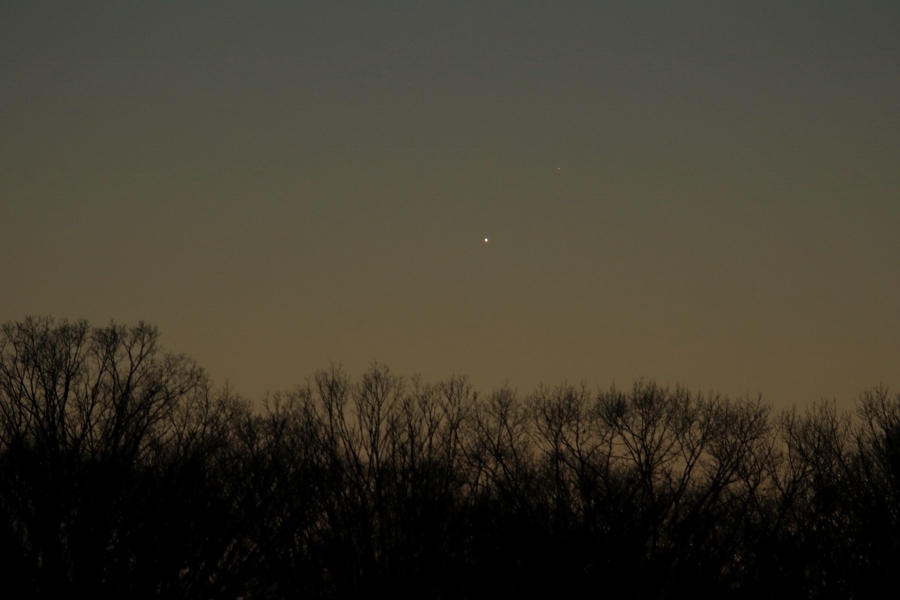
February 10, 2019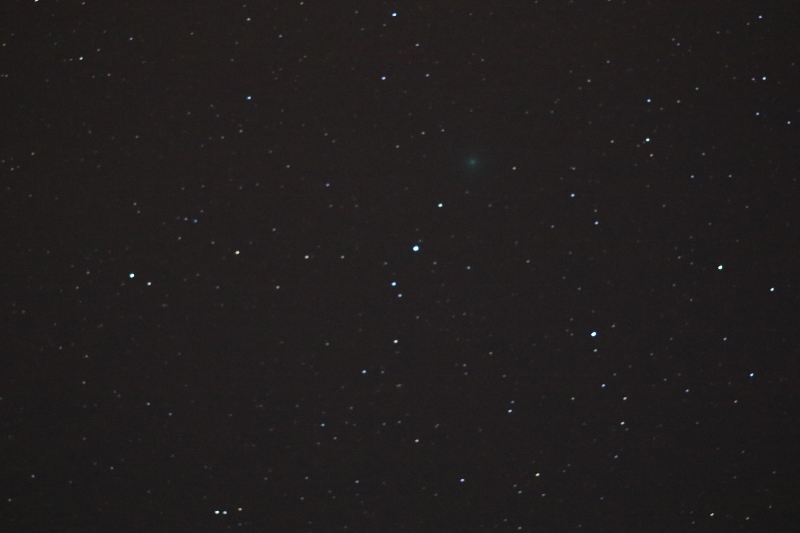
Omega Centauri, Venus & Jupiter, C/2018 Y1 (Iwamoto)
February 3, 2019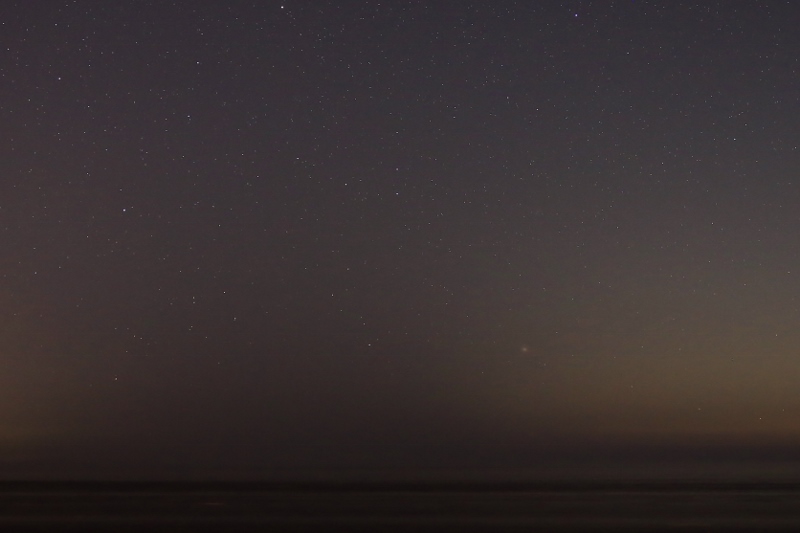
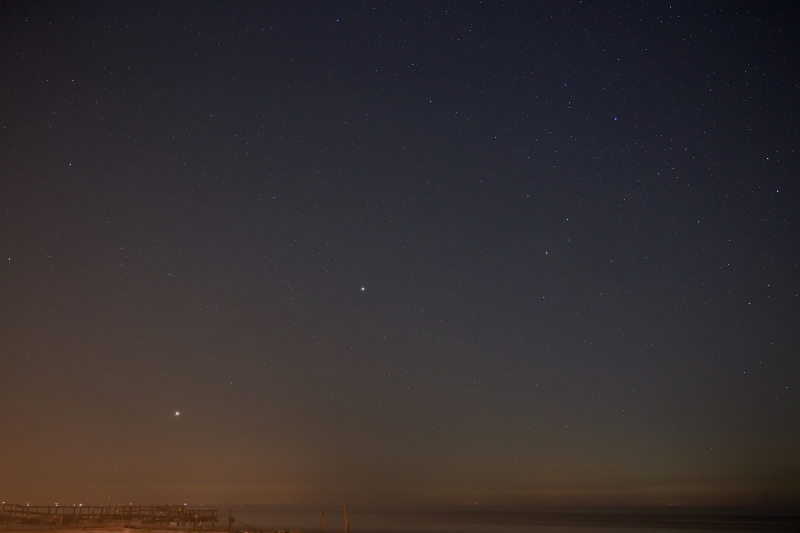
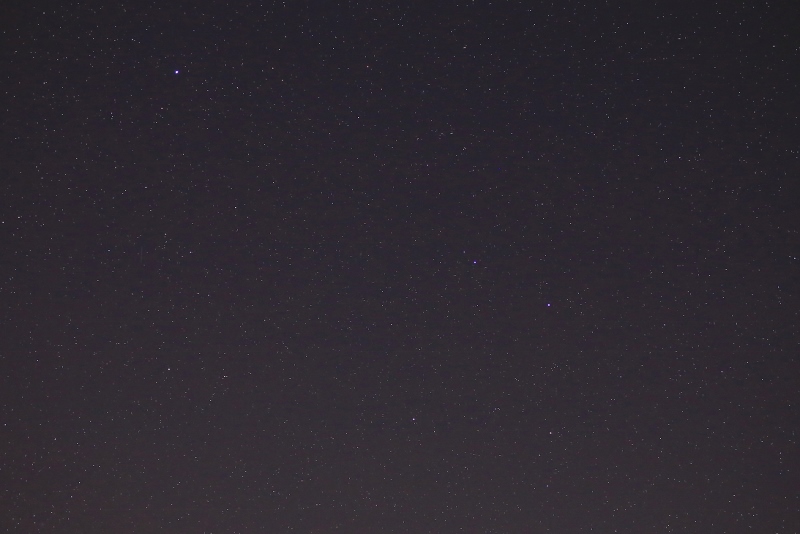
and Asteroid (7) Iris, near Spica
January 30, 2019
January 30, 2019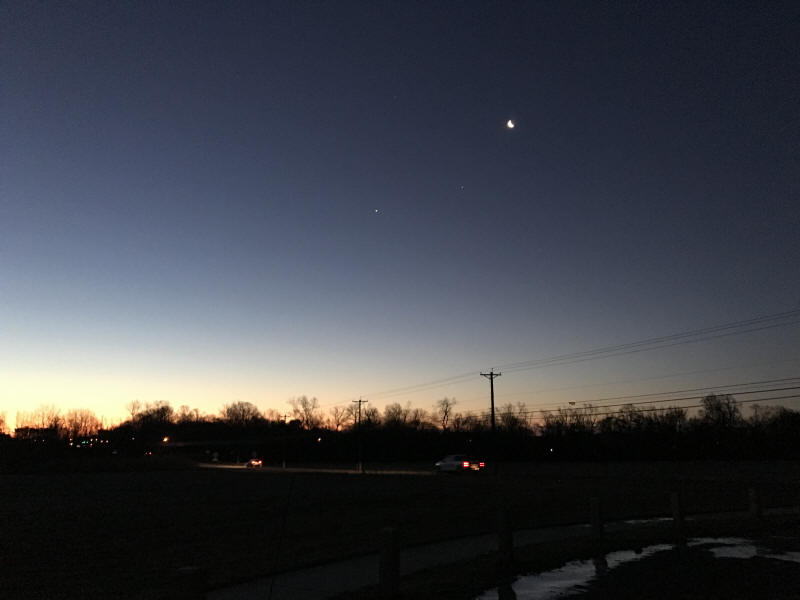
January 26, 2019
January 22, 2019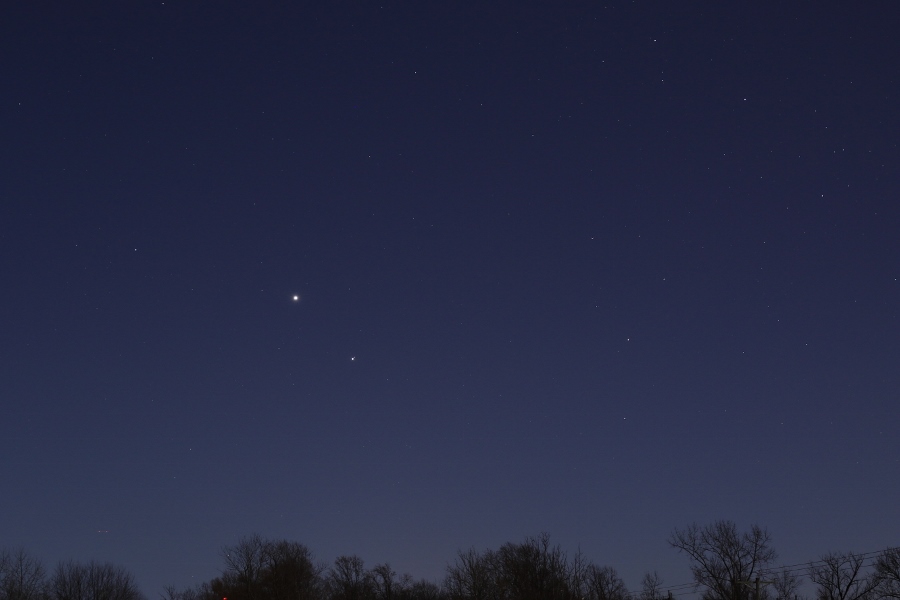
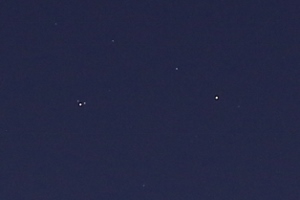
Jupiter, Ganymede and Callisto (9°
altitude)
Rho and Omicron Ophiuchi (12.5° altitude)
January 21, 2019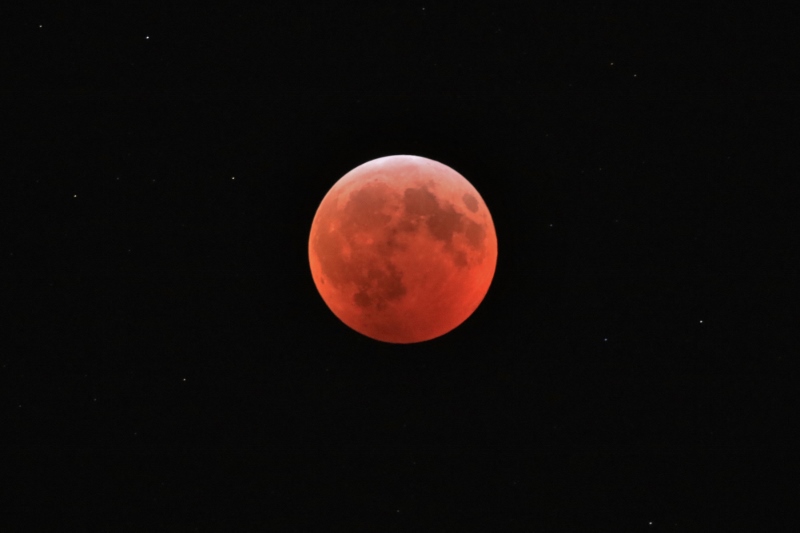
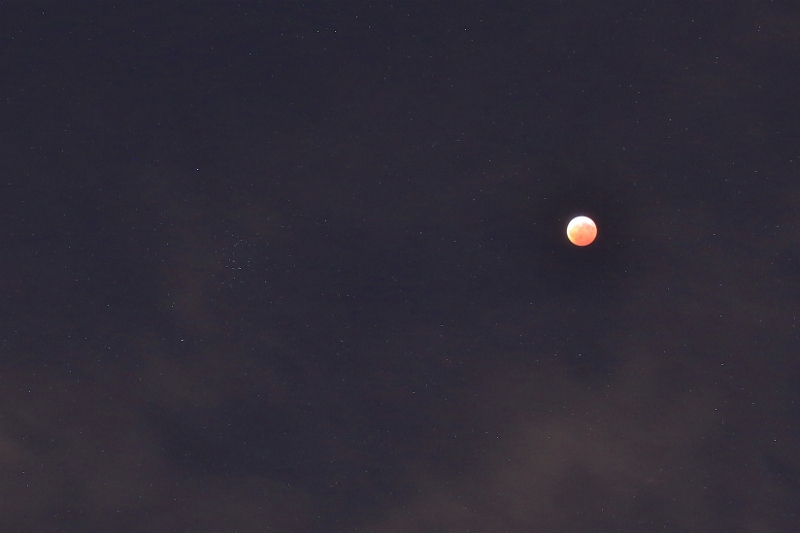
January 15, 2019